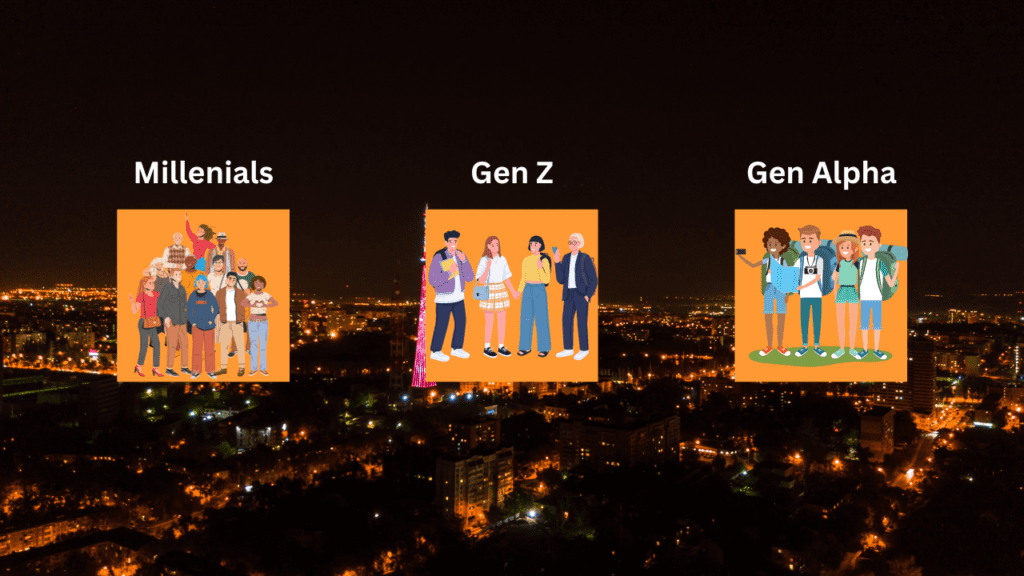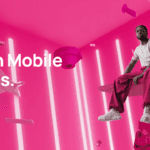Your cart is currently empty!
With Gen Alpha entering teenage in 2024, we could finally see post-paid subscriptions for mobile services going up in India
Posted by
–
Family postpaid subscriptions bound to see a surge across metros and non-metro cities and towns.
2024 marks a major shift in the digital consumer market structure in India. We will have the first batch of teenagers of Gen Alpha, essentially, those born in 2010. Children these days get early on exposed to digital services including mobile phones. But, till teenage usage of mobile phones or other digital services is a reason of conflict between parents and their children. Once they hit teenage, parents start showing relaxation towards children using digital services including mobile services. There are some added dimensions to this. Children in teenage start independently venturing out to tuitions, academies and hobby clubs. Parents want to stay connected with them and give them access to a mobile phone, to be specific smartphone.
Similarly, after covid-19 formal and information WhatsApp groups are a reality. There are several updates that even teachers send over WhatsApp which children need to know. So again, a reason for children to be digitally active. The point I am trying to make is that though 18 years is the legal age when anyone can have a mobile subscription, the reality is that children these days start their mobile journey right in the teenage, in many cases even before. In these cases, they are given the mobile connection by parents in their name. So legally, the user of the mobile subscription is a parent. The typical possession versus owner case.

This reality and the digital behaviour of Gen Alpha means we could be seeing the proportion of post-paid subscription increasing in India. Typically, they have always been in under 10%. There was a time when they had stagnated at 5%, however, in recent times, the percentage of postpaid subscriptions has been hovering in the range of 8-10%. But now with Gen Alpha becoming ‘genuine’ users of mobile subscriptions, the postpaid subscriptions are likely to increase.
The reason for Gen Alpha having preference for a postpaid subscription lies in the behaviour how they consume the digital services. Millennials have seen the metered era, where against a sum, the user would get limited well defined services beyond which they would be charged. Also, when Millennials started to use mobile services, there wasn’t much to do with mobile services. There were calls and SMS. Later for some time MMS also was an option. But the main environment within which Millennials were seeing digital services and other similar services being offered was well controlled available for limited period. The television had specific hours of transmission and radio also would take some breaks for the transmission. Once Internet came to the scene, it was a metered service. Though, Internet was always on, the users would connect only when required and switch the connectivity off. PCs and Laptops were the only devices to connect to the Internet and they were not always on. Even when Internet started powering pockets through mobile phones, the millennials owing to their behaviour and environment in which such services were used, would turn off Internet and connect only when required to surf or check emails. Of course, the Internet services would be offered as a package having definite consumption levels allowed. Beyond that it would become meter charged.
Then came the Gen Z, which saw cellular broadband. Cellular broadband was more usable and applications and use cases started to sprout here and there. The competition in the mobile telephony services intensified, which had otherwise seen a stagnation for years together. Though Gen Z would also love to stay on-net, the telecom operators were offering very lucrative pre-paid services. While this would allow stay within budgets, the fact that they were user adaptable is also because Gen Z was naturalised with interruptions. They would know that their services including mobile services can go for a pause. They would exhibit the patience to get it recharged and restore the services. By this time, the telecom operators had already started offering unlimited (fair usage plans) that would allow all day connectivity within the permission limits. There were also growing use cases like watching YouTube videos, social networking and in later part the rise of OTTs and several digital services and applications. So, while there was a use case and availability, for Gen Z the mobile services were still a controlled utility. At the same time, they would be fine with interruptions and make efforts to keep their services alive. This would happen through recharges. They would make request to their friends or relatives to help them with instant recharge instantly or with a short gap. Again, the behaviour of Gen Z was something that would accept such breaks and interruptions in services.
However, this changed very fast. From this initial behaviour of Gen Z, we saw a paradigm shift causing ‘digital restlessness’. Gen Z would always remain connected and engaged with their smartphones, except when it wouldn’t be possible. Using smartphones became the main thing and in between they would do other things to fill the gap. Also concepts like phubbing emerged affecting the interpersonal relationships and communication.
As Gen Alpha enters teenage, we are already living in a world where consumption of smartphones and the allied digital services are at an all-time high. It has not only remained confined to Gen Z, but across age groups, there is a significant increase in the number of active hours on smartphones. While the national average of active smartphone usage is around 8.5 hours a day, it has grown in the range of 25-30% in the past 2 years across all age groups.
The smartphone industry has already identified this trend which is why in the past few years they have invested billions in R&D worldwide so that the device can match the expectations of users, especially the younger generations. Fast charging, larger battery capacities, turbo RAM, 5G, super powerful processors, are all enablers of an experience that makes smartphones work as per the usage patterns of users.
From the mobile services point of view, the industry is already ready. However, the shift required an anchor to make it happen. There are already family packs available from the operators that lets a family use up to 4 independent sims under one plan sharing the data and call allowances in a month, which are generously adequate. With Gen Alpha requiring mobile services, which will also have their parent’s agreement because of various reasons already explained, they are more likely to go for a post-paid connection. The reason is the growing ‘digital restlessness’, where users can expect outage of any service but for connectivity. In no case will Gen Alpha be fine with a pre-paid connection that has the chance of interruption. Also, the differential benefits between having a pre-paid or post-paid connection are narrowing in economic terms. Also, while consumers are spending more on smartphones, there would be a sizeable cohort within this, which can also roughly pay ₹1,500 for 4 independent mobile numbers converged into a single-family plan as per the present tariff benchmarks. By the time children are in teens, they have bank accounts, Aadhar ID, WhatsApp and other such services linked to a unique number. Earlier it used to be of parents. Now they want things in their own control. A post-paid connection means a perpetual investment in the unique identity of a teenager in the form of a mobile number. Now the kid can connect all the digital services including wallets with own personal number.
Also, as children would get ready for their colleges and university programmes for which they would often move to another state, they would buy a new sim, again a pre-paid to get rid of the roaming charges. Today it’s a history. In fact, in many cases, if the children don’t have a mobile number, parents make it sure to give them one before they move out of their state to another for undergraduate or higher studies.
To curb the growing menace of fake digital presence, several platforms have already implemented 2-factor identification mechanism which requires a mobile number and changing that every time would mean pain.
With Gen Alpha reaching this important life-stage from where an individual and independent journey starts for anyone, the post-paid mobile number becomes a permanent enabler of the digital presence which is an integral and important aspect of the persona of any citizen nowadays. With this expected behaviour and the changing genuine demands of the digital world, parents as well as teenagers (Gen Alpha) would prefer to have a one-time permanent digital identity which is a mobile number at present. All these behavioural changes as well as the increasing genuine dependence on digital services is indicating to the fact that the proportion of post-paid connections will increase as new generations of users join the digital landscape. This will mark the beginning of the paradigm shift in the Indian telecom journey where paying, profitable and sticky consumers will join the operators for services and if they are able to offer them seamless experience, they won’t port for life. In fact, family packs can go on and on for generations. So, the operators can continue to acquire customers generations after generations. With this changing trend, the proportion of post-paid consumers could settle at 18-20% by the end of this decade. So, operators you should be influencing Gen Alpha right from today!




